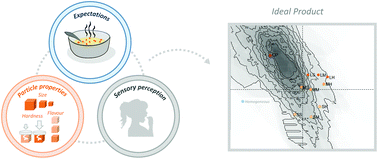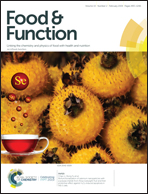As good as expected? How consumer expectations and addition of vegetable pieces to soups influence sensory perception and liking
Abstract
This study investigated the effect of mechanical contrast and particle flavour concentration of carrot particles added to soups on expected and perceived sensations and liking. The properties of a chicken soup were varied by addition of real carrots, model carrots and model chicken particles differing in size, fracture stress, and/or carrot flavour concentration. The four aims of the study were: (1) To study the effect of mechanical contrast on expected and perceived sensations; (2) To investigate the role of particle carrot flavour concentration on perceived sensations and liking; (3) To study the effect of dis/confirmation of expected by perceived sensations on liking; (4) To investigate the consumer's preferences and ideal profile of soups. Expected sensory properties were affected by particle size: the larger the particles, the higher the expected intensities for hardness, chewiness, and crunchiness of soups. Perceived sensory properties were significantly influenced by size and fracture stress of carrot particles. Increasing flavour concentration in model carrot particles added to soups marginally influenced liking suggesting that flavour concentration in particles added to soups has a limited effect on liking. When model carrot particles were added to soups, expected sensory properties were confirmed by perceived sensory properties, and consequently liking did not change considerably. The congruency and familiar appearance of the model carrot pieces probably contributed to the confirmation of expectations. When model chicken pieces were added to soups, expected sensory properties were disconfirmed by perceived sensory properties leading to a significant decrease in liking. Soups containing medium-sized, soft carrot particles were the closest to the consumer's ideal product profile. To summarize, consumer expectations and physicochemical properties of chicken and carrot particles added to chicken soup contributed to perception and liking of soups. We conclude that the sensory product profile of common products such as soups can be optimised by addition of congruent and familiar particles that match consumer’ expectations.



 Please wait while we load your content...
Please wait while we load your content...